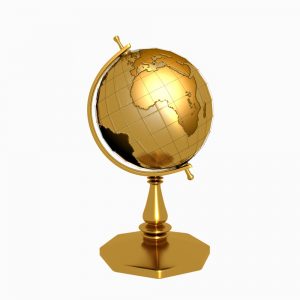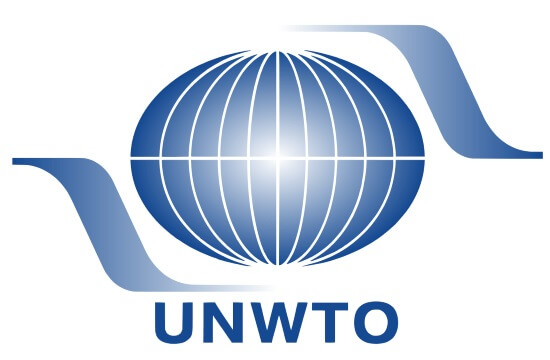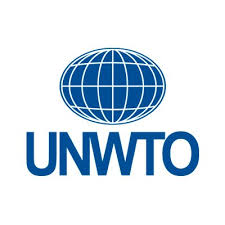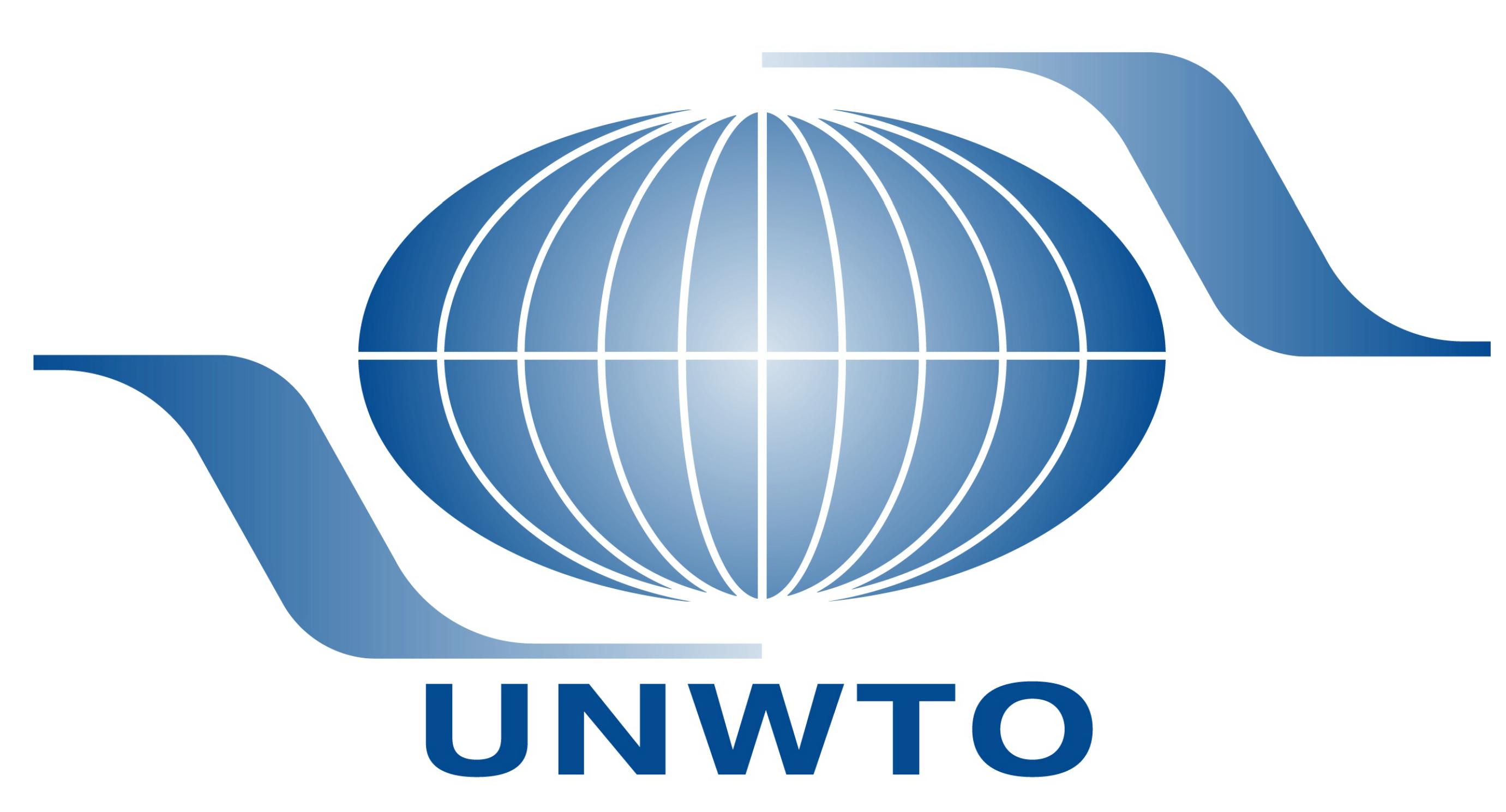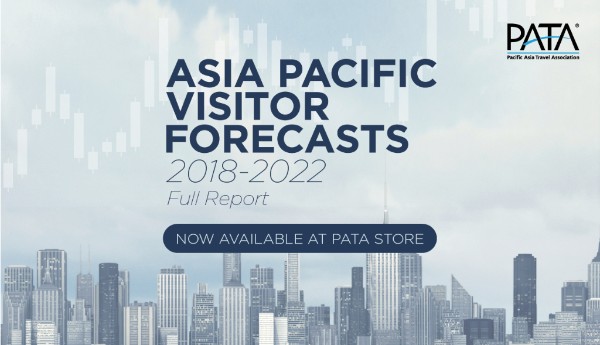
Asia Pacific Visitor Forecasts 2018-2022
Hong Kong SAR the strongest destination in both average percentage growth and additional arrivals received in 2022
BANGKOK, March 1, 2018 – Hong Kong SAR will lead Asia Pacific destinations in terms of growth over the next five years, according to the just released Asia Pacific Visitor Forecasts 2018-2022 Full Report. Following on from the earlier release of the Executive Summary Report, the Full Report delves deeper into origin-destination pairs for 40 Asia Pacific destinations, as well as tourism receipts and income and price elasticities, where data permit.
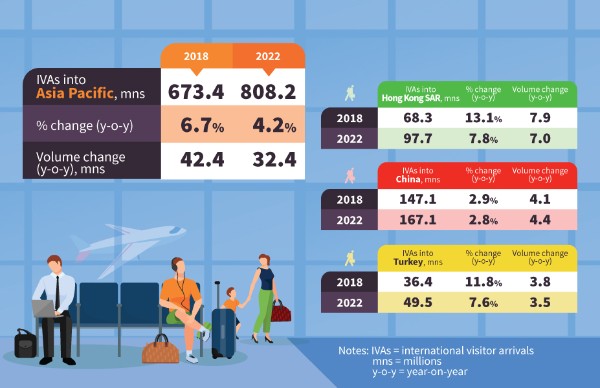
ANNUAL FOREIGN VISITOR GROWTH – 2017 TO 2018
The Asia Pacific destinations covered in this report are forecast to receive an aggregate inbound count of more than 673 million international visitor arrivals in 2018, well in excess of 42 million more than the volume received in 2017. Hong Kong SAR, China and Turkey lead the way with annual increases of 7.9 million, 4.1 million and 3.8 million foreign arrivals respectively.
Destinations in the Americas register highly as well, with the USA and Mexico in particular, expected to show annual increases in inbound foreign arrivals of 3.6 million and 2.6 million respectively.
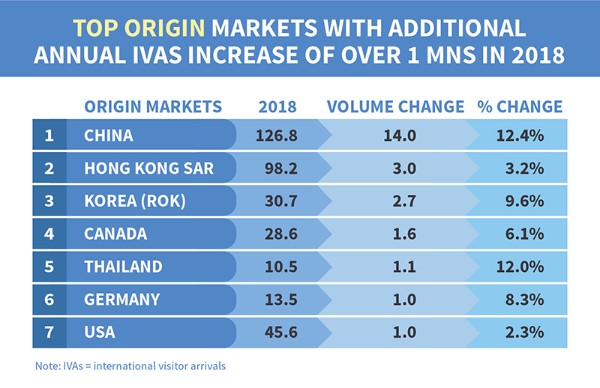
The major international visitor-generating markets will be China, Hong Kong SAR and Korea (ROK) with those three origin markets producing a collective increase of close to 20 million additional IVAs into Asia Pacific between 2017 and 2018. In the Americas, Canada and the USA will generate an additional 2.7 million arrivals. In total, seven origin markets will add volume increases of more than one million foreign arrivals each, from Asia (four origin markets), the Americas (two origin markets) and Europe (one origin market).
Across the arrivals-generating regions, it is expected that Asia will account for 68% of the additional volume received by Asia Pacific destinations between 2017 and 2018; Europe will produce close to 13% and the Americas a little under 11%.
East Europe is expected to produce some solid gains over this period as well, especially out of the Russian Federation and Poland with each of these origin markets producing well over 600,000 additional arrivals each, between 2017 and 2018. Out of the Pacific, Australia will also be a solid producer of foreign arrivals into Asia Pacific, adding more than 780,000 additional arrivals over this period.
PERIOD FOREIGN VISITOR GROWTH – 2017 TO 2022
By 2022, it is expected that China will consolidate its position as the number one destination in Asia Pacific, capturing one-fifth of the total volume of foreign arrivals into the region in that year. Hong Kong SAR and the USA follow in terms of the absolute volume of foreign arrivals in that year, however, China has a lead of more than 64 million over Hong Kong SAR, its closest contender.
Mexico and Turkey make up the top five inbound ranking by absolute volume in 2022 and together, these top five destinations account for well over half (55.5%) of all the foreign visitor arrivals into Asia Pacific in that year.
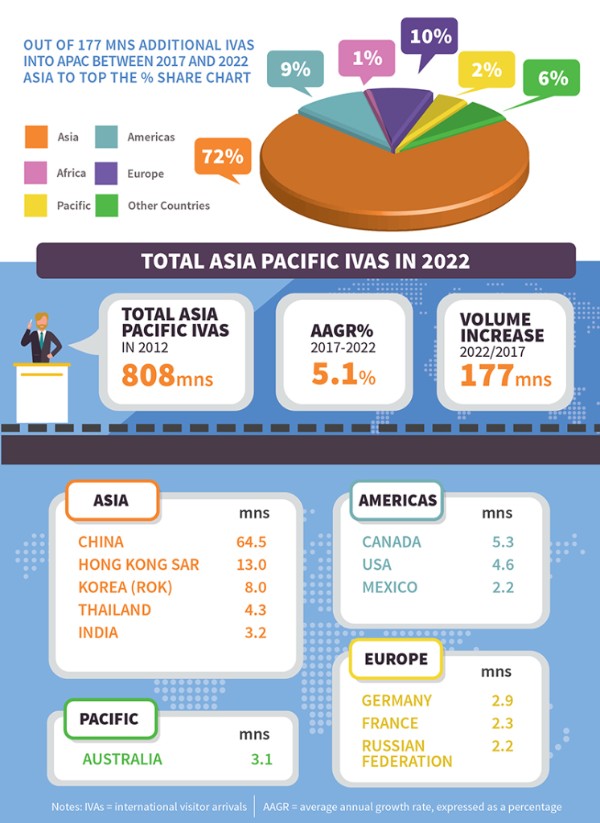
Of the 177 million additional foreign arrivals into Asia Pacific generated between 2017 and 2022, 72% will come from Asian origin markets, 10% from European markets and a little over nine percent will come from origin markets in the Americas.
The strongest Asian market generators of additional visitor arrivals between 2017 and 2022 will be led by China and Hong Kong SAR with respective increases of 64.5 million and 13 million. These will be supported by Korea (ROK), Thailand and India with incremental increases of eight million, 4.3 million and 3.2 million respectively.
Out of Europe, it is expected that the strongest incremental gains in volume of arrivals between 2017 and 2022 will come from Germany, France and the Russian Federation, with increases of 2.9 million, 2.3 million and 2.2 million respectively. Poland (1.9 million additional arrivals) and the United Kingdom (1.5 million additional arrivals) will make up the top five origin markets ranking by incremental increase in the volume of arrivals over that period.
From the Americas, the big three of Canada, the USA and Mexico will generate the most additional volume of arrivals (5.3 million, 4.6 million and 2.2 million) with Argentina and Brazil closing out that top five list with gains of 1.3 million and 0.8 million respectively.
The Pacific also fields a strong supplier of additional foreign arrivals, with Australia producing a period increase of more than 3.1 million, to place it within the top ten list of the strongest generators of incremental volume between 2017 and 2022.
RECEIPTS GROWTH 2017 TO 2018, AND 2017 TO 2022
The tourism-related revenue that these foreign arrivals generate is another useful metric. For the 25 destinations in this report where such data are available, it appears that total receipts from international tourism will increase from US$710 billion in 2017 to more than US$755 billion in 2018 and continue to grow to 2022 when tourism expenditure is expected to reach more than US$955 billion.
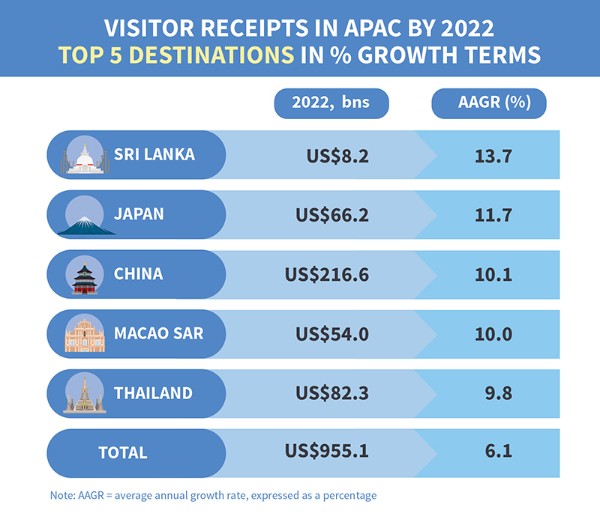
From among these 25 destinations the Americas held a collective 36.1% share of tourism receipts in 2017. That relative performance however, is expected to reduce to 34.7% in 2018 and then fall away to just over 29.1% by 2022 even as receipts will increase by an annual average of 1.7% between 2017 and 2022.
Asia on the other hand, is expected to see its receipts from tourism increase from US$409 billion in 2017 to US$447 billion in 2018, and to almost US$625 billion by 2022. This moves the relative share position of Asia in terms of receipts from international tourism among this group of destinations, from 57.6% in 2017 to 59.2% in 2017 and 65.4% by 2022. The Asian AAGR for tourism receipts between 2017 and 2022 is expected to be around 8.8% with Northeast and South Asia showing even stronger average growth with AAGRS of 9.6% and 9.3% respectively.
This Asian growth will be at the expense of not just the Americas, but also the Pacific region where the relative share position will decline from 6.3% in 2017 to 5.5% in 2022, even while tourism receipts grow at an average of 3.2% per annum over that period.
Said Dr. Mario Hardy, CEO of PATA “The growth momentum of Asia Pacific as both a receiver and a generator of international visitors – not just into Asia Pacific but globally – and the receipts that they generate, is set to continue to at least 2022”.
Dr. Hardy added, “As is always the case, growth in international arrivals across Asia Pacific is often unequal, with subtle changes and shifts occurring as travellers discover new destinations and increasingly turn away from those that do not offer the experiences and memories that they seek and demand or that in themselves are, for whatever reason, seen as unstable and unsafe”.
“It must be recognised that gains in international tourism into destinations and locations, do not always occur by the simple diffusion of generally increasing traveller volumes. Success in this regard requires continuous effort and adaptation in order to deliver the superior service that itself regularly drives the positive experiences as demanded and increasingly expected by a constantly changing traveller profile,” he continued.
“These PATA Asia Pacific Visitor Forecasts for the period 2018 to 2022 can deliver quantifiable insights on how these changes and shifts are expected to play out over the next five years, and do so across a number of metrics. As such they offer a substantive background to anyone making resource allocation decisions in the Asia Pacific tourism sector and should feature in any such decisions,” he concluded.

